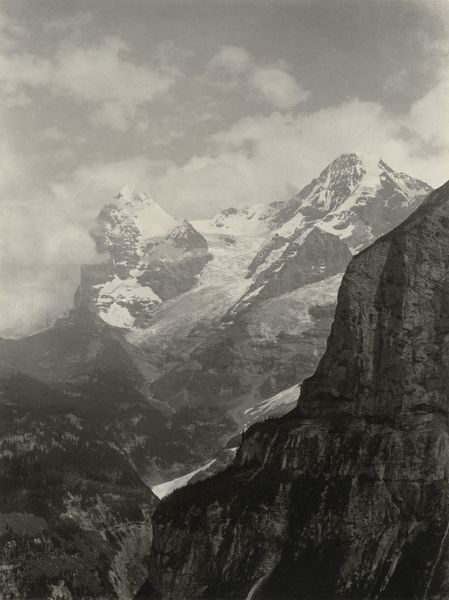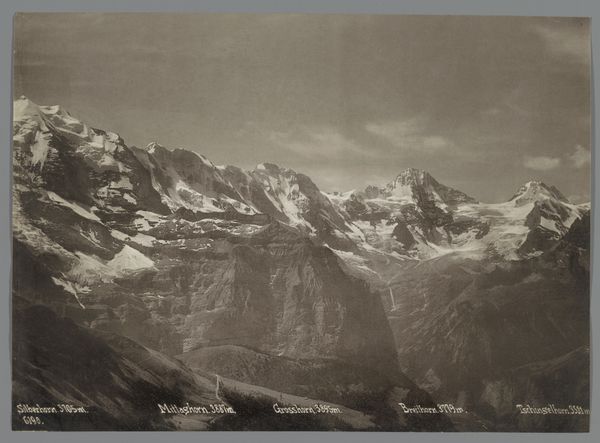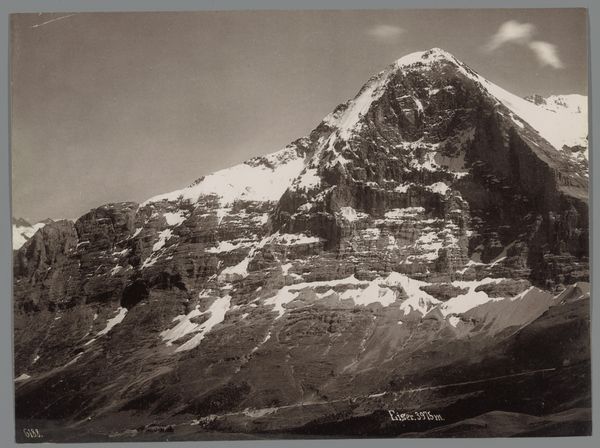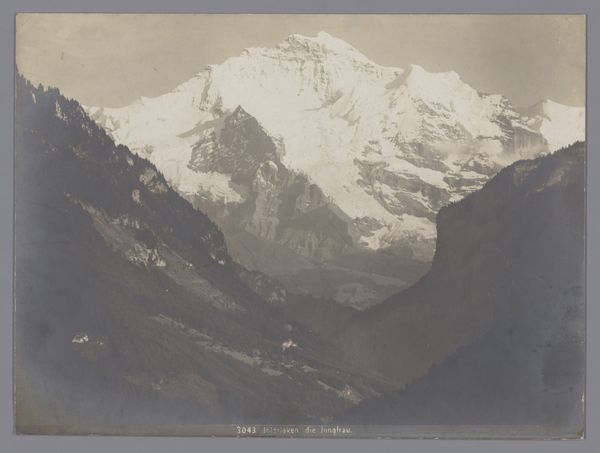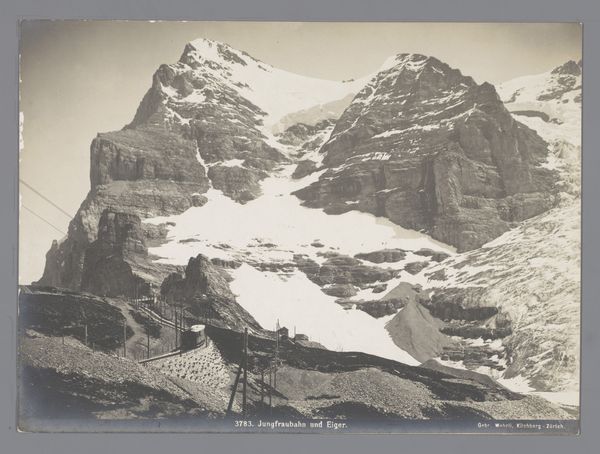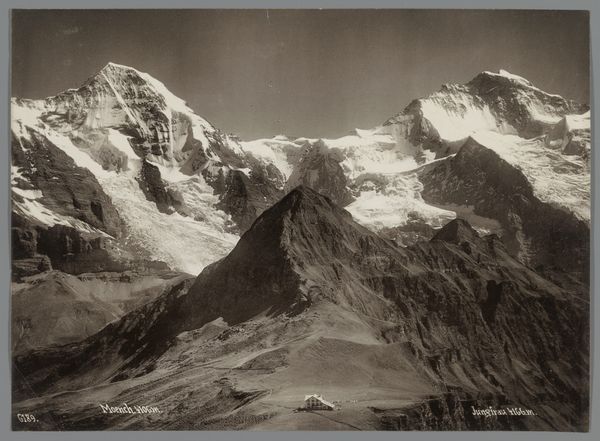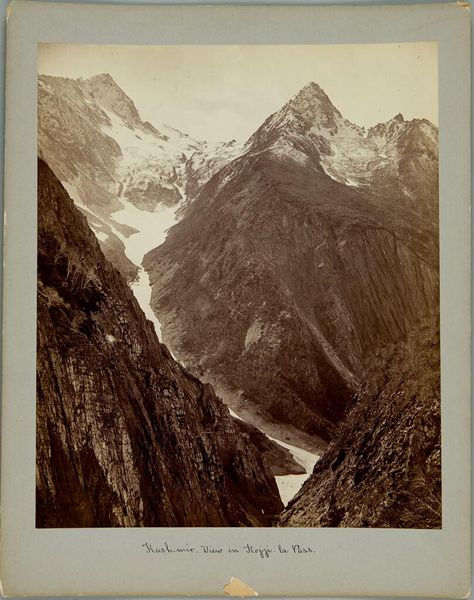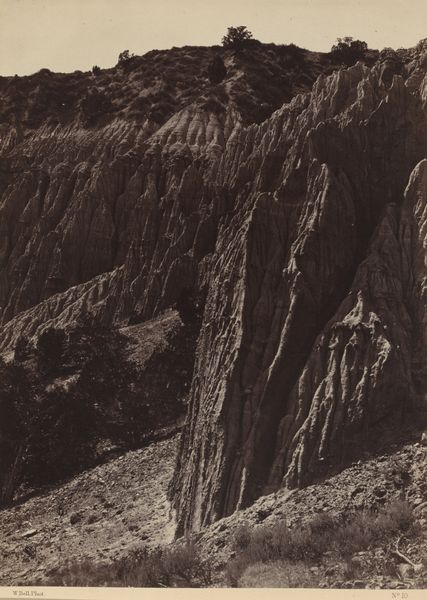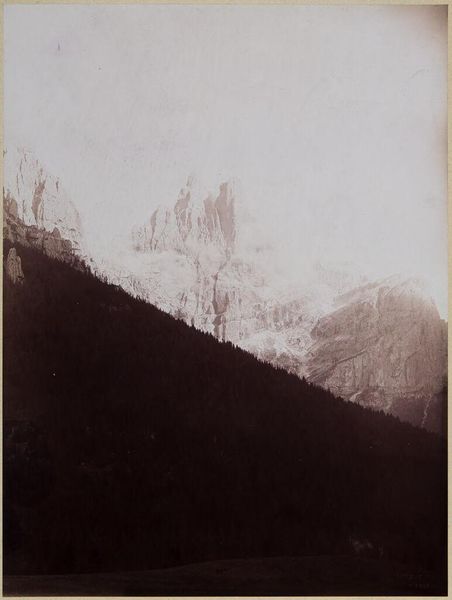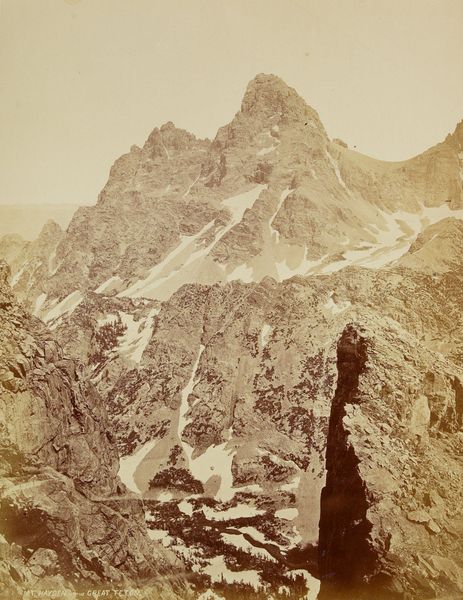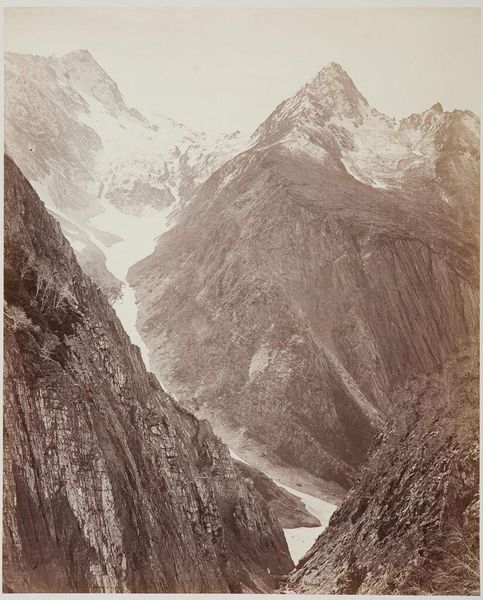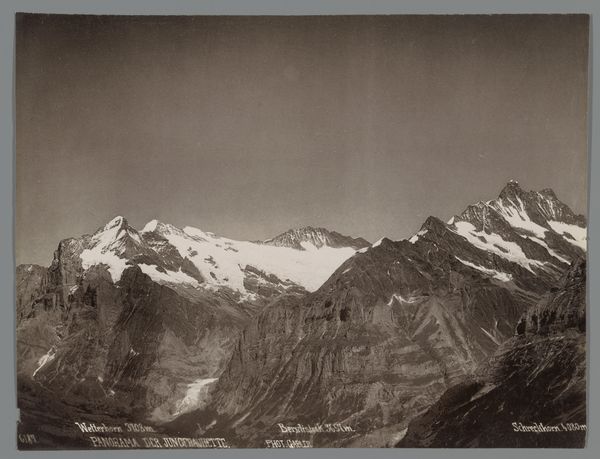
Dimensions: sheet (trimmed to image): 20.8 × 15.9 cm (8 3/16 × 6 1/4 in.) page size: 33.8 × 27 cm (13 5/16 × 10 5/8 in.)
Copyright: National Gallery of Art: CC0 1.0
Curator: What a brooding photograph! The tones are so soft, almost melancholic. Editor: Indeed. Here we have Alfred Stieglitz's "The Jungfrau," a gelatin silver print, possibly from around 1894 to 1896. Look at the way the landscape dominates! Curator: I’m struck by Stieglitz's choice of gelatin silver. It lends a luminosity that's almost ethereal. Was he making a specific statement using photography over painting at the time, or about labor intensive darkroom processes? Editor: Absolutely. The Pictorialists, and Stieglitz was a champion among them, fought to legitimize photography as fine art. He spent a lot of time trying to evoke an aesthetic of the romantic through careful manipulation of the developing process. Each print became unique with its tones and focus achieved through painstaking control of variables, so labor definitely shaped meaning. Curator: The composition reinforces this idea. The sharp peaks disappearing into those clouds suggest something almost sublime, resonating with Romantic landscape painting and transcendentalist thought in that period. One must also think about photography democratizing those subjects – how could an Alpine scene change the social norms for experiencing "nature?" Editor: You see how the manufacturing of cameras impacted distribution to create those new experiences of nature. He actually cropped the photograph drastically which emphasizes those vertical, almost geometric, mountain forms. The hand manipulation speaks volumes to labor. It also invites us to consider access to technological advancement at that time; Who had leisure? Who had time to explore and then document the terrain, thus shaping the popular idea of landscape? Curator: A valid question. It pushes one to think about how wealth shapes aesthetics and how social privilege influenced even what we consider beautiful. The photograph has this interesting sense of ambiguity - the ethereal merging with sharp peaks. It really transcends just documentation. Editor: It does offer much. Considering materials, labor, social dynamics we reveal greater perspectives of this single image! Curator: And for me, its power lies in reflecting on the socio-political implications and how notions of "nature" were actually being constructed. Editor: Right! It goes deeper than just snow, ice, and light – though those materials are something to admire!
Comments
No comments
Be the first to comment and join the conversation on the ultimate creative platform.
